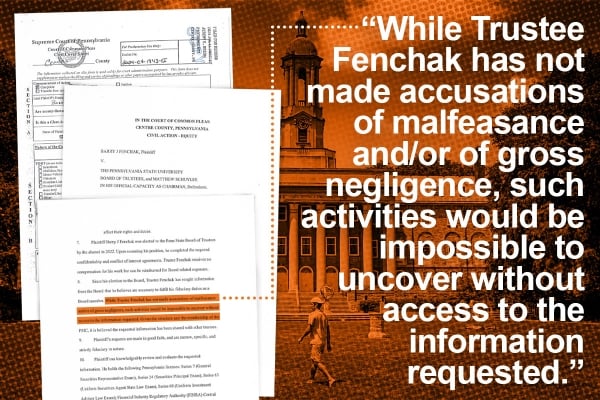A recent trustee lawsuit against Penn State University has brought to light renewed concerns about the institution’s transparency and decision-making processes. The lawsuit, filed by three alumni trustees, alleges that the university has not been forthcoming in providing information about a controversial real estate deal involving the sale of a property in downtown State College.
The trustees claim that Penn State failed to provide them with key documents and information related to the sale of the property, which was sold at a steep discount to a local developer with ties to the university. The trustees argue that this lack of transparency is a violation of their fiduciary duties and has compromised their ability to effectively oversee the university’s financial operations.
The lawsuit has sparked a heated debate among the Penn State community, with some defending the university’s actions as necessary for its financial well-being, while others argue that the lack of transparency is unacceptable and undermines trust in the institution.
This is not the first time that transparency concerns have been raised at Penn State. The university has faced scrutiny in the past for its handling of the Jerry Sandusky sexual abuse scandal, which raised questions about the institution’s culture of secrecy and lack of accountability.
In response to these concerns, Penn State has made efforts to improve transparency and accountability in recent years. The university has implemented new policies and procedures aimed at increasing transparency in decision-making processes, including the establishment of a new Office of Ethics and Compliance and the appointment of a Chief Ethics and Compliance Officer.
However, the lawsuit raises new questions about whether these efforts have been effective in addressing the underlying issues of transparency and accountability at Penn State. Critics argue that the lack of information provided to the trustees in this case highlights the ongoing challenges the university faces in being open and transparent with its stakeholders.
As a public institution that relies on public trust and taxpayer dollars, Penn State has a responsibility to be transparent in its operations and decision-making processes. The lawsuit serves as a reminder that transparency is not just a moral imperative, but a legal requirement for institutions like Penn State that are accountable to the public.
Ultimately, the outcome of the trustee lawsuit will shed light on the university’s commitment to transparency and accountability. It is imperative that Penn State take this opportunity to address any shortcomings in its transparency practices and demonstrate a renewed commitment to openness and accountability moving forward. Only then can the university begin to rebuild trust with its stakeholders and ensure a strong and sustainable future for itself and the community it serves.



